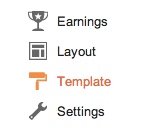UML 2.0 - Pocket Reference - If you really are going to carry it around
I have to admit that I am lured into the pocket size form factor used by O'Reilly and others. The cute baby animals on the cover, like the gorilla on the front of the "UML 2.0 - Pocket Reference" is just fun. I also have "The Elements of UML Style" in the same easy to consume and not really pocket sized size. Parts of this review also apply to both pocket books, but the majority is about the UML 2.0 - Pocket Reference.
If you do actually end up bringing this "pocket" reference around with you then great, but consider when will you actually use it. While you are walking around the park thinking about UML and all of its confusing details? This book only covers syntax and usage, not really semantics which is where most people struggle anyhow, as the semantics and detailed syntax consume over 1000 pages. You could bring it to meetings and wow people with perfect diagrams. Again, this book might help with that, but how often are you drawing a diagram on the white board and everyone is confused because you lines are not specific enough, or the shape is just not right. This does not happen because the people in the meeting have the context of the conversation and thus do not need perfection, the drawing is just a tool to move the conversation forward not get hung up on syntax, semantic maybe, but this book won't help with that beyond the bare surface.
Additionally this spartan "pocket" reference decided to include OCL, which is 5 pages long. Distilling a language, context, and usage in 5 tiny pocket pages really was just a waste of space. There are 100+ page books on OCL to do it justice, if the book is even current or matches your implementation of UML.
It seems far more rational to make your own pocket guide using a print out from websites with examples or the front and back flaps of UML Distilled, by Martin Fowler. This follows the 80/20 approach in that you get 80% of the value with 20% of the cost and complexity. Pick the diagrams or elements you typically use, such as classes and components or sequence diagrams and limit your pocket guide to those. Or just bring your laptop and have some favorite UML sites bookmarked.
Finally if they are really trying to make a reference, create tabs for the sections at least, having to look up the page in the front or term in the back is not very efficient if you use the book frequently. And if you are like me and the pocket references end up on a bookshelf they don't even fit in, the black sheep of your library.

Comments